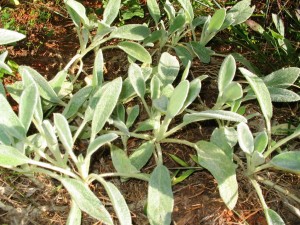 As I work on turning this one acre homestead into a self-sustaining Garden of Eden, I have two requirements for every single plant I consider putting in the ground: they must be either edible or medicinal. Preferably both.
As I work on turning this one acre homestead into a self-sustaining Garden of Eden, I have two requirements for every single plant I consider putting in the ground: they must be either edible or medicinal. Preferably both.
Why? Because frankly I don’t have money or space to waste on frivolous landscaping. Everything from the plants to the animals must have a purpose.
More and more people are beginning to see the benefit of having a garden and growing your own food, but growing your own medicine could be equally as vital to your well being. What would you do if you couldn’t get the medical supplies or help you needed for a very long time? How would you manage?
As I plan my medicinal garden, I choose what to grow by studying different medical emergency scenarios and learning which plants I would be able to use if it ever came down to that.
One day as I was doctoring up one of my kiddos, the thought crossed my mind, “What if I couldn’t get any more of these band-aids? What could I use?” This question prompted me to delve into my herbal books and scour the internet for an answer. And I found a good one.
Wooly Lamb’s Ear.
It’s one of my favorites because it’s medicinal AND edible.
A Natural Antibacterial Bandage
Wooly Lamb’s Ear, botanical name Stachys byzantina, has been used for centuries as a wound dressing on battlefields. Not only do the soft, fuzzy leaves absorb blood and help it to clot more quickly, they also contain antibacterial, antiseptic, and anti-inflammatory properties. All of these factors make this plant a really great alternative to store-bought bandages (especially since many of them are made in China!).
Other Medicinal Uses
Wooly Lamb’s Ear actually has many medicinal uses. You can heat a few bruised leaves in a pot of simmering water, and use the cooled infusion as an eyewash to treat pinkeye and sties.
Drink a tea made from young, dried Wooly Lamb’s Ear leaves to help with fevers, diarrhea, sore mouth and throat, internal bleeding, and weaknesses of the liver and heart. (~Wikipedia)
You can bruise the leaves so that the juices are released, and put them on bee stings or other insect bites to help reduce the swelling. The same effect can be seen when used for treating hemorrhoids, or for postpartum recovery.
Still More Uses
As if Wooly Lamb’s Ear isn’t awesome enough, the list of uses continues.
Being soft and super absorbent, Lamb’s Ear leaves can be used as menstrual pads, or in place of cotton balls. It can even be used as toilet paper!
You can eat it as well. Enjoy young, tender leaves fresh in a salad, or gently steamed as greens.
Are you growing Lamb’s Ear yet?
If you don’t have any of this important medicinal plant growing around your home yet, get some. If you can’t find any plants locally, buy some seeds and grow them yourself. It’s super easy, and much cheaper that way anyways. Lamb’s Ear make a gorgeous landscaping border, and grows well in containers. Plant as much as you have room for, ’cause it’ll come in handy when your stash of tp runs out!
How To Grow Your Own Antibacterial Bandages (Wooly Lamb’s Ear) From Seed
Starting your own plants from seed really is easy. Here’s how…
1. Fill a well-draining container with Seed Starting Mix. A yogurt cup with holes poked in the bottom works nicely.
2. Wet the soil thoroughly. If you’re on city water, use filtered water for your plants. The chemicals in treated water can inhibit plant growth.
3. Plant 1-2 seeds per small container (thinning out the weakest seedling), or plant seeds about 6″ apart in a larger pot, burying them 1/4″ deep.
4. Keep the soil moist and the containers out of direct light until the seedlings germinate. As soon as you see the tops of the plants emerging, put them somewhere where they can get at least 6 hours of sunlight daily, or under a grow light. It helps to set the cups/pots in a shallow tray of water to keep the soil from drying out.
5. When the plants have at least three sets of leaves, they’re ready to be transplanted to a semi-shady place in your yard. Space them 12″ apart. They will multiply readily in good soil.
If you haven’t started thinking about growing some medicinal herbs, Wooly Lamb’s Ear is a perfect one to begin with. And in my opinion, you can never have enough!
Once you have it, don’t stop there! There are so many medicinal herbs you can be growing no matter where you live. Check out Grow Your Own Antibiotics for more great suggestions.
Source: theprepperproject.com

